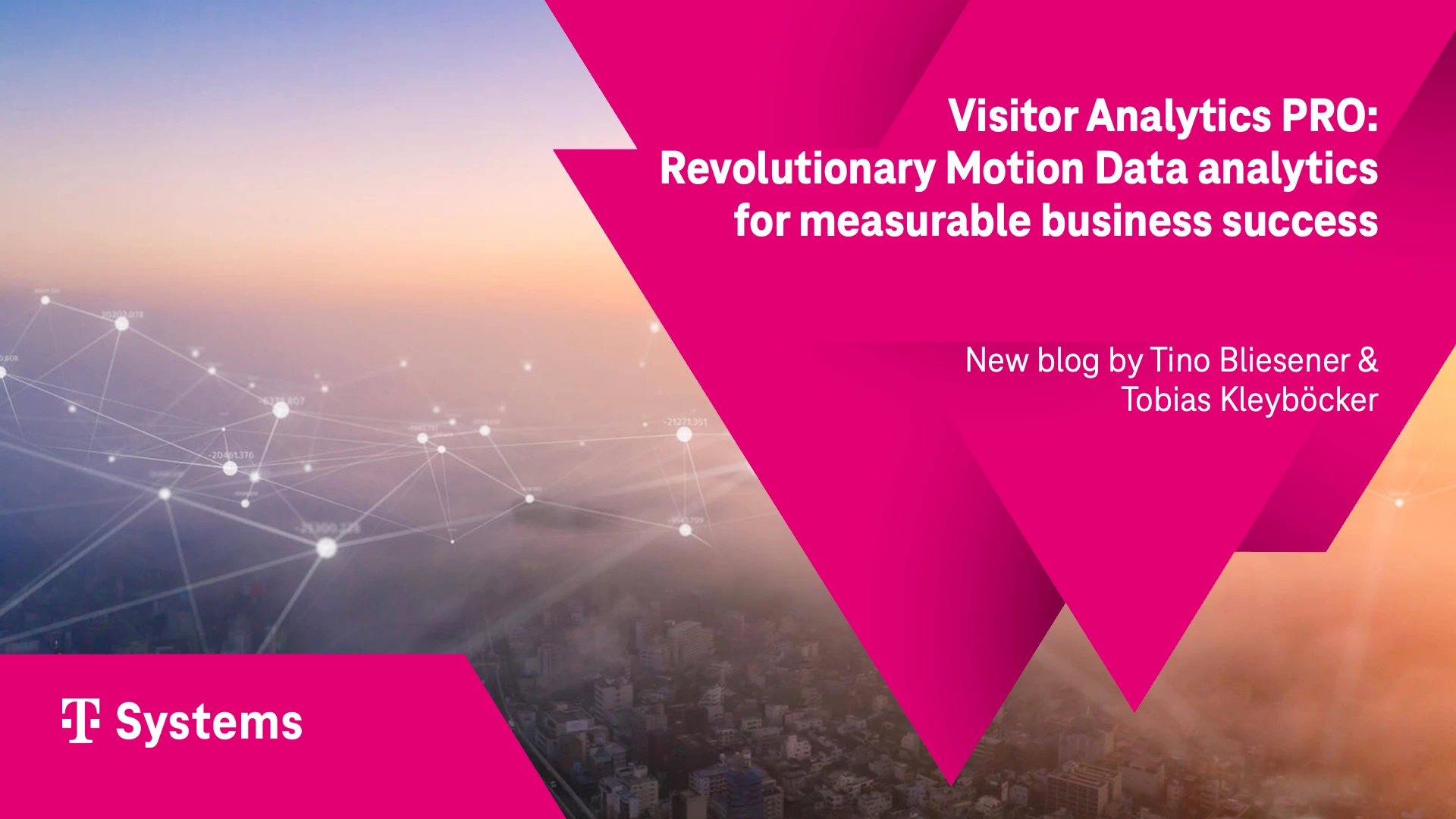For years now, new technology is emerging to enrich transportation options in urban areas around the world, in Asia, America and Europe: From smartphone operated bike sharing to lithium-ion battery powered bikes (e-bikes) and e-scooters. All this new technology has become easy to use and practical. So much so that Germany changed its law in 2019 to allow for use of e-scooters on public streets (Elektrokleinstfahrzeuge-Verordnung (eKFV, link). Since then many new companies have emerged to sprinkle cities with e-bikes and e-scooters, for example, Bird, Lime, Tier, Voi … But where is intermodal transport?
New technology enables new business: From multimodal to intermodal mobility?
Merriam-Webster defines intermodal transportation as “being or involving transportation by more than one form of carrier during a single journey” (Merriam-Webster 2020-04-11). Intermodal is exciting, because it increases the flexibility of getting from point A to point B. Particularly, last mile technology, such as e-scooters have been welcomed because they “can be an ideal complement to bus and train for the last few kilometers to the destination. This makes public transport more attractive and can reduce car journeys” (Achim Berg, President of Bitkom, the country’s largest digital association, link, 2019). And Deutsche Telekom has been closely involved with e-scooter innovation: For one, it is providing connectivity, for another, it witnessed the launch of one provider, the Tier company, firsthand. Founded by Lawrence Leuschner (CEO), Julian Blessin (CPO), and Matthias Laug (CTO), Tier was “born” at Hubraum in 2018 (see Figure 1, Hubraum, link). Hubraum is Deutsche Telekom’s tech incubator with campuses in Berlin, Krakow and Tel Aviv (link). By early 2020, Tier’s founders have raised more than EUR 130 million and “blitzscaled” (Hoffman & Yeh 2018) operations into 55 cities across 11 countries (Crunchbase, link).
No benefits in practice?
Today, major cities like Berlin are dotted with colorful e-scooters like sprinkles on an ice cream sundae: Bird (black), Lime (white), Tier (green) and Voi (red) … with shared bikes from vendors like Donkey Republic (orange), Next (silver) and others adding to the color mix. However, despite these very visible new last mile transportation options, so far, no intermodal service offering has emerged. Which begs the questions: Why not? What are we waiting for? One reason could be that there are no benefits for the end user in practice.
Hypothesis testing using a data science model and simulation experiments
End user benefits are a conditio sine qua non, an indispensable condition for any commercially viable offer. Without end user benefits nothing else matters. So, let’s find out about it. How? How can we estimate benefits of intermodal mobility, if it doesn’t exist? How to do the impossible to prove the probable? One option is simulation, a well-accepted scientific tool (e.g., Schlueter Langdon 2005). Simulation in business has evolved from Nobel-prize winning groundwork in economics by Simon (1996) and Smith (1962). For simulating urban mobility and traffic various tools exist, such as Sumo, Simulation of Urban Mobility by DLR, the German Aerospace Center [Deutsches Zentrum für Luft- und Raumfahrt] (DLR 2020, link; Krajzewicz et al. 2012) or VMC by the Fraunhofer Institute for Industrial Mathematics (Fraunhofer ITWM 2020, link), for example. These tools are big and powerful and allow for very granular analysis. For our high-level assessment we opted for a much more simplified model as depicted in Figure 2. It has evolved from this author’s experience with agent-based computational simulation (Schlueter Langdon 2014, 2005; for quick overview of computational simulation: link) and insights from descriptive analytics and first root-cause analyses of data collected on different shared and electrified urban Mobility-as-a-Service (MaaS) operations and pilots around the world (link).
Experimental strategy and user scenario cascade
The trick to creating benefits with intermodal mobility is in linking up different modes of transport for an end-to-end journey, thereby leveraging existing, paid for infrastructure. The tighter the linking, the better. Less friction is faster. Therefore, we hypothesize that using new technology, such as smartphone apps and e-scooters, can reduce travel time or speed up the journey of a citizen on a trip from point A to point B. For example, a smartphone app could show the closest transport option and navigate me to it. In short and to the point: The more “smart,” the faster. In order to test this hypothesis, we simulate experiments that evolve from a baseline scenario to progressively smarter scenarios. Our baseline is a self-organized journey. It is our critical starting observation and data used for comparison and control: Someone drives from A in their car to near B, parks the car, and walks to destination B. A could be a driver’s garage and B could be their office, a restaurant, or a shopping mall (see S0 in Figure 2). This is the common, and therefore, most useful baseline scenario (Figure 3 reveals this to be the dominant case in Germany): Nobody can drive all the way to B … through the front door, the reception area, up the stairs into the office on the 3rd floor. Cars need to be parked near B. This baseline scenario is summarized in Figure 5 as “self-organized.”
For each of the following intermodal scenarios, we assume that the journey will become more “smart.” Meaning, elements of a journey will be more connected and coordinated (see Figure 2). For example, in the first intermodal scenario’s last leg (S1), we substitute walking for an e-scooter ride. For the second scenario (S2), we assume use of a smart parking app, such as Deutsche Telekom’s ‘Park and Joy’ (link). The ‘Park and Joy’ app requires the driver to enter their destination before they set off on a journey. It then searches for available parking space based on park prediction data, makes suggestions and navigates the driver to their selected parking space.
Faster journeys with intermodal mobility
Despite having evolved from a rather simple model, results point to a trend that confirms our hypothesis: The more “smart,” the faster. Figure 5 provides a high-level illustration of outcomes. Overall, results clearly demonstrate that there is value in intermodal mobility. Technology can move the needle in the right direction. Moving from a self-organized journey to a seamless scenario using new technology can reduce trip duration. However, our experiments have several limitations:
- For one, they are abstract only, using an abstract location and average travel values. Each scenario relies on average values for travel distance and travel time. For example, “on average, each Berliner takes three and a half trips a day and spends about 80 minutes in traffic. The average distance is 6 kilometers per person per trip. The average trip time […] is about 23 minutes” (UVK Berlin 2017, p. 12). However, travel distance and time vary greatly depending on mode of transportation. For all of Germany and all modes of transportation (from foot to car) the average trip length is 12.5 km, while the median, the middle, is only 3.8 km (Follmer & Gruschwitz 2019). Figure 4 provides an overview of the average trip distance for various modes of transportation, some of which were used for our scenario segments. We further used travel time estimates provided by Google Maps. For estimates on time savings with smart parking we relied on values from Inrix: According to these traffic experts being navigated to an empty spot instead of circling to hunt for one (on and off-street parking) can easily shave 5 -10 minutes of an average trip duration (Inrix 2017). At this point, because of use of averages and an abstract location we only provide a trend indication as illustrated in Figure 5 at this point (this model has been rerun for more specific settings within Berlin, which delivers quantitative estimates for times savings that confirm our trend indication).
- For another, travel time is only a primary performance factor – not the only factor – because consumer or human decision-making is complicated as anybody with a family, a partner, or children can readily attest to. Other performance factors include price, of course, then comfort and maybe sustainability.
- Furthermore, enduser value is a necessary condition only (first order condition) for something to happen. Whether this value can be captured profitably or “monetized” is an entirely different question but an important one for any business venture to capitalize on enduser value (think of it as a second order or sufficient condition). However, analyzing this second order condition would require a different model with other variables, for example industry structure. Is it an open market, can any e-scooter company enter (open competition)? Or is access limited: One city permit only (supply monopoly) or four (oligopoly)? For example, in late 2019 the San Francisco Municipal Transportation Agency (SFMTA) voted to allow four e-scooter companies to rent out up to 10,000 e-scooters citywide (link). Different market structures allow for different pricing strategies, which in turn, affect profitability or the extent to which enduser value can be monetized. All we wanted to show here is that there is no inherent value problem for endusers with intermodal transport.
For a more detailed discussion please consult with a longer paper by Langdon from which this abstract is derived; it is available at Drucker Customer Lab: link.
This model has been rerun for more specific settings within Berlin, which delivers quantitative estimates for times savings that confirm our trend indication: Check back for part 2, soon.
References
Civity. 2019. E-Scooter in Deutschland – Ein datenbasierter Debattenbeitrag. Civity Management Consultants, Hamburg, link
Civity. 2014. Urban mobility in transition? The importance of free-floating carsharing for transport and the economy. Matters No. 1, Civity Management Consultants, Berlin
Follmer, R. 2020. Mobilitätsreport 01, Ergebnisse aus Beobachtungen per repräsentativer Befragung und ergänzendem Mobilitätstracking bis Ende Mai. Ausgabe 29.05.2020, Bonn, Berlin, mit Förderung des BMBF, Federal Ministry of Education and Research
Follmer, R., and D. Gruschwitz. 2019. Mobility in Germany, short report. Edition 4.0 of the study by Infas, DLR, IVT and Infas 360 on behalf the Federal Ministry of Transport and Digital Infrastructure (BMVI) (FE no. 70.904/15). Bonn, Berlin.
Hoffman, R., and C. Yeh. 2018. Blitzscaling: The Lightning-Fast Path to Building Massively Valuable Companies. HaperCollins: London
Inrix. 2017. Searching for Parking Costs Americans $73 Billion a Year. Press release (July 12)
Krajzewicz D., J. Erdmann, M. Behrisch, and L. Bieker. 2012. Recent Development and Applications of SUMO – Simulation of Urban Mobility. International Journal on Advances in Systems and Measurements 5 (3&4): 128-138
Nobis, C., and T. Kuhnimhof. 2018. Mobilität in Deutschland – MiD Ergebnisbericht. Studie von infas, DLR, IVT und infas 360 im Auftrag des Bundesministers für Verkehr und digitale Infrastruktur (FE-Nr. 70.904/15), Bonn, Berlin, link
Schlueter Langdon, C. 2014. 3-Step Analytics Success with Parsimonious Models. In: Wang, J. (ed.). Encyclopedia of Business Analytics and Optimization. Idea Group Publishing: Hershey, PA; London: 1-13
Schlueter Langdon, C. 2005. Agent-based Modeling for Simulation of Complex Business Systems: Research Design and Validation Strategies. International Journal of Intelligent Information Technologies 1(3) (July-September): 1-11
Simon, H.A. 1996. The sciences of the artificial (3rd edition). Cambridge, MA: The MIT Press
Smith, V.L. 1962. An experimental study of competitive market behavior. Journal of Political Economy 70: 111-137
UVK Berlin, Senatsverwaltung für Umwelt, Verkehr und Klimaschutz. 2017. Mobilität der Stadt – Berliner Verkehr in Zahlen 2017. Dezember, Berlin

























